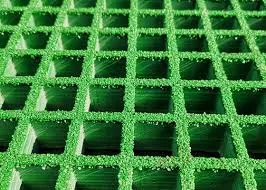
-
 Afrikaans
Afrikaans -
 Albanian
Albanian -
 Amharic
Amharic -
 Arabic
Arabic -
 Armenian
Armenian -
 Azerbaijani
Azerbaijani -
 Basque
Basque -
 Belarusian
Belarusian -
 Bengali
Bengali -
 Bosnian
Bosnian -
 Bulgarian
Bulgarian -
 Catalan
Catalan -
 Cebuano
Cebuano -
 China
China -
 China (Taiwan)
China (Taiwan) -
 Corsican
Corsican -
 Croatian
Croatian -
 Czech
Czech -
 Danish
Danish -
 Dutch
Dutch -
 English
English -
 Esperanto
Esperanto -
 Estonian
Estonian -
 Finnish
Finnish -
 French
French -
 Frisian
Frisian -
 Galician
Galician -
 Georgian
Georgian -
 German
German -
 Greek
Greek -
 Gujarati
Gujarati -
 Haitian Creole
Haitian Creole -
 hausa
hausa -
 hawaiian
hawaiian -
 Hebrew
Hebrew -
 Hindi
Hindi -
 Miao
Miao -
 Hungarian
Hungarian -
 Icelandic
Icelandic -
 igbo
igbo -
 Indonesian
Indonesian -
 irish
irish -
 Italian
Italian -
 Japanese
Japanese -
 Javanese
Javanese -
 Kannada
Kannada -
 kazakh
kazakh -
 Khmer
Khmer -
 Rwandese
Rwandese -
 Korean
Korean -
 Kurdish
Kurdish -
 Kyrgyz
Kyrgyz -
 Lao
Lao -
 Latin
Latin -
 Latvian
Latvian -
 Lithuanian
Lithuanian -
 Luxembourgish
Luxembourgish -
 Macedonian
Macedonian -
 Malgashi
Malgashi -
 Malay
Malay -
 Malayalam
Malayalam -
 Maltese
Maltese -
 Maori
Maori -
 Marathi
Marathi -
 Mongolian
Mongolian -
 Myanmar
Myanmar -
 Nepali
Nepali -
 Norwegian
Norwegian -
 Norwegian
Norwegian -
 Occitan
Occitan -
 Pashto
Pashto -
 Persian
Persian -
 Polish
Polish -
 Portuguese
Portuguese -
 Punjabi
Punjabi -
 Romanian
Romanian -
 Russian
Russian -
 Samoan
Samoan -
 Scottish Gaelic
Scottish Gaelic -
 Serbian
Serbian -
 Sesotho
Sesotho -
 Shona
Shona -
 Sindhi
Sindhi -
 Sinhala
Sinhala -
 Slovak
Slovak -
 Slovenian
Slovenian -
 Somali
Somali -
 Spanish
Spanish -
 Sundanese
Sundanese -
 Swahili
Swahili -
 Swedish
Swedish -
 Tagalog
Tagalog -
 Tajik
Tajik -
 Tamil
Tamil -
 Tatar
Tatar -
 Telugu
Telugu -
 Thai
Thai -
 Turkish
Turkish -
 Turkmen
Turkmen -
 Ukrainian
Ukrainian -
 Urdu
Urdu -
 Uighur
Uighur -
 Uzbek
Uzbek -
 Vietnamese
Vietnamese -
 Welsh
Welsh -
 Bantu
Bantu -
 Yiddish
Yiddish -
 Yoruba
Yoruba -
 Zulu
Zulu
frp panel
Exploring the Versatility and Benefits of FRP Panels
Fiber Reinforced Polymer (FRP) panels have emerged as a transformative material in various sectors due to their remarkable properties and versatility. These composite materials, which consist of a polymer matrix reinforced with fibrous material, have been making waves across industries like construction, transportation, and manufacturing. This article delves into the characteristics of FRP panels, their applications, and the benefits they offer.
Understanding FRP Panels
FRP panels are primarily made of a combination of plastic resins and strong fibers, such as glass, carbon, or aramid. These fibers provide the panels with high tensile strength and durability, while the resin binds the fibers and shapes the final product. The result is a lightweight yet extraordinarily strong material that can withstand various environmental conditions.
One of the most notable characteristics of FRP panels is their resistance to corrosion and chemicals. Unlike traditional materials such as steel and wood, FRP panels avoid issues with rusting, rotting, and degradation when exposed to harsh substances. This makes them ideal for use in environments such as chemical processing plants, water treatment facilities, and maritime applications.
Applications of FRP Panels
The adaptability of FRP panels is evident in their broad range of applications. In construction, they are frequently used for cladding, roofing, and interior finishes. Their lightweight nature can help reduce overall building costs, while their durability enhances the lifespan of structures.
In the transportation industry, FRP panels are utilized in manufacturing buses, trailers, and recreational vehicles. Their lightweight properties contribute to better fuel efficiency, while also providing the necessary strength and insulation. Additionally, in marine applications, FRP is used in boat construction, where resistance to water and salt is critical.
Another vital area of application is the manufacturing of industrial equipment. Due to their ability to withstand corrosive environments, FRP panels are used in tanks, piping, and various containment solutions. In many cases, choosing FRP over traditional materials can lead to decreased maintenance costs and enhanced operational efficiency.
frp panel

Environmental Benefits
In today's world, sustainability is more important than ever. FRP panels contribute to environmental conservation through several pathways. First, their durability extends the lifecycle of products, which reduces the frequency of replacements and minimizes waste. Second, the lightweight nature of FRP panels can lead to lower energy consumption during transportation and installation.
Furthermore, many manufacturers are moving towards using recycled materials in the production of FRP panels, further lessening their environmental impact. As the industry evolves, the integration of sustainable practices and materials will enhance the overall appeal of FRP solutions.
Cost-Effectiveness
While the initial cost of FRP panels may be higher compared to conventional materials, their longevity and low maintenance requirements can lead to significant cost savings over time. The reduced weight results in lower shipping costs and easier installation processes, which can save both time and resources in construction projects.
Moreover, in industries where downtime must be minimized, the reliability and durability of FRP panels ensure that projects remain on schedule, preventing costly delays.
Conclusion
FRP panels exemplify the fusion of innovation and practicality. Their myriad benefits—from extreme durability and resistance to corrosion, to lightweight properties and environmental sustainability—make them a valuable choice across multiple industries. As technology advances and more industries begin to recognize the advantages of these panels, we can expect FRP to play an increasingly pivotal role in shaping the future of construction, transportation, and manufacturing.
In conclusion, understanding and leveraging the potential of FRP panels not only presents economic advantages but also aligns with modern demands for sustainable and efficient materials. As we continue to innovate and develop new applications for FRP technology, its importance in industrial practices will undoubtedly grow, paving the way for a more resilient and sustainable future.









